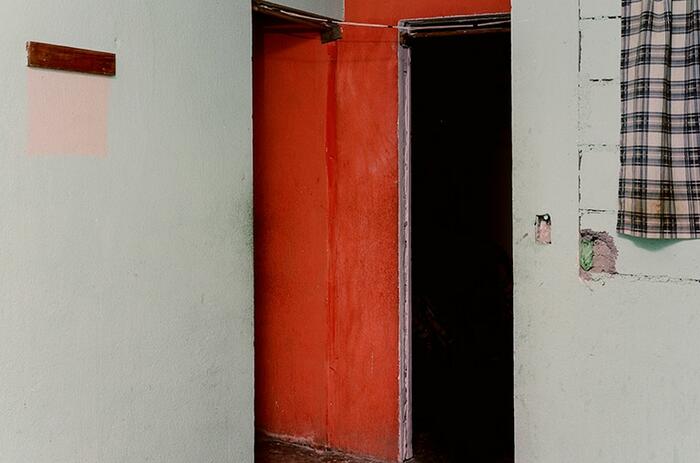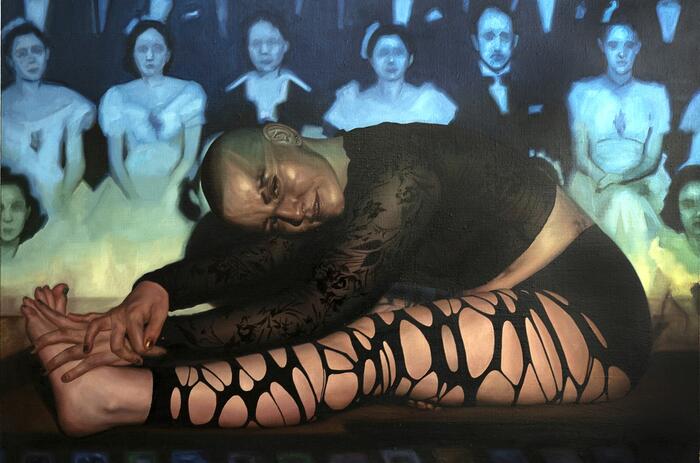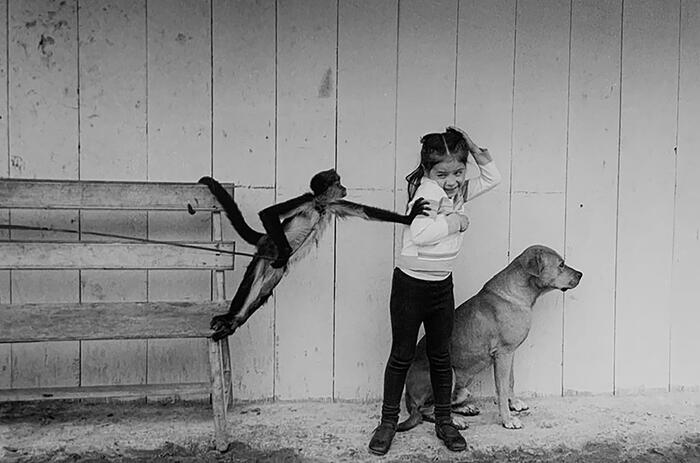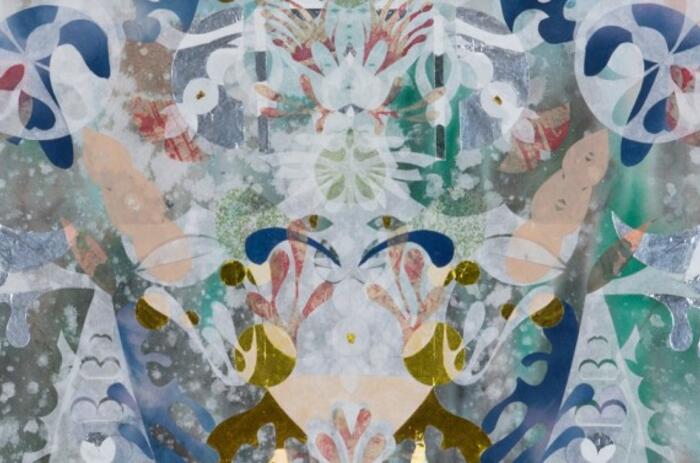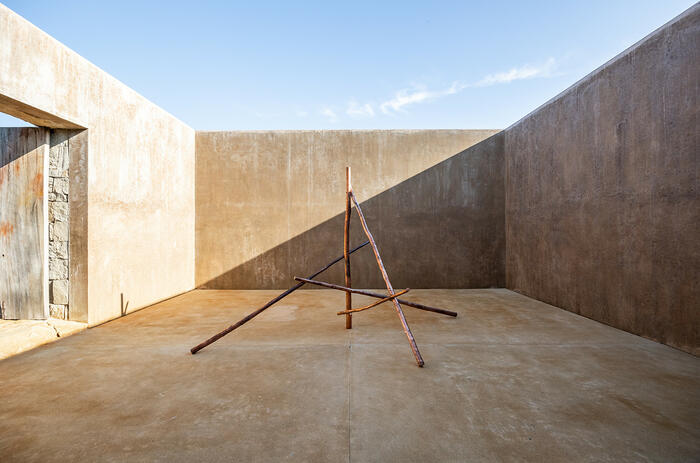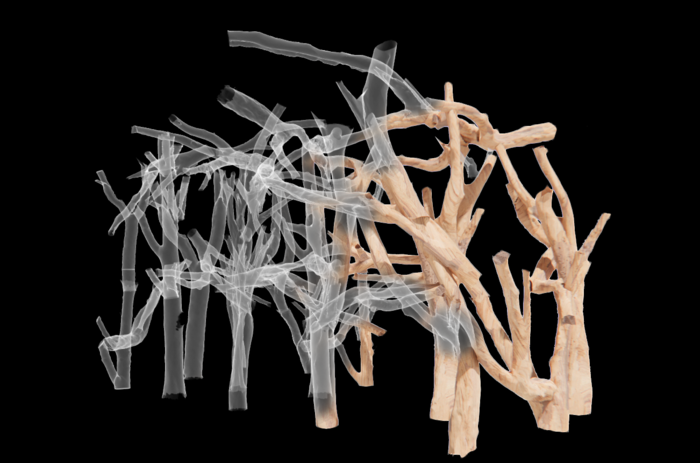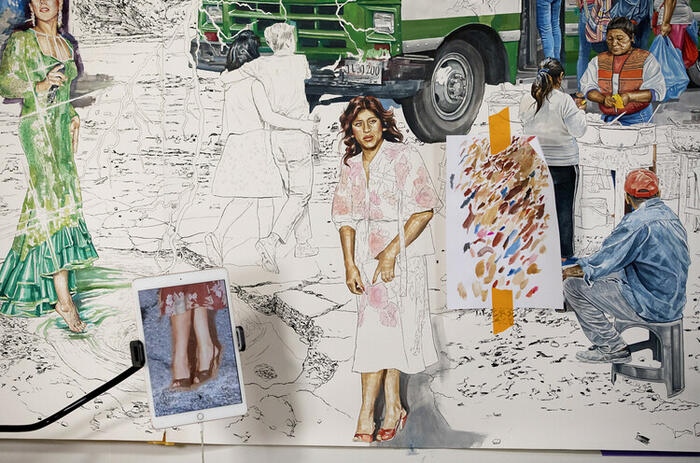MEXICO CITY ART WEEK: A VIBRANT SHOWCASE OF THE COUNTRY´S THRIVING ART SCENE
The Mexican art scene is going through an exceptional moment. There is a palpable energy, with new galleries opening, others already consolidated in the process of expansion and Mexican artists and curators gaining more and more international visibility. Their presence in museums, biennials and global fairs continues to grow, consolidating Mexico as a key player in the contemporary art scene.
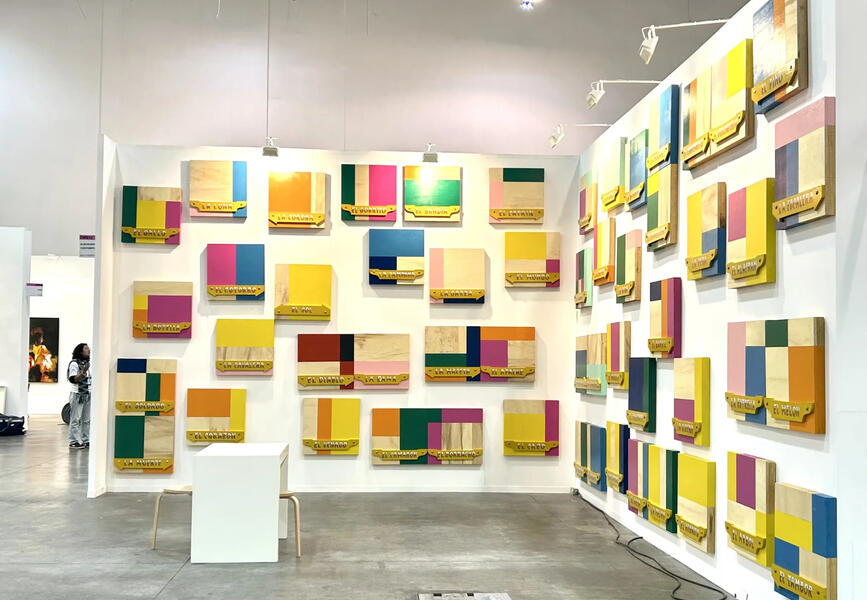
Two weeks ago, I had the opportunity to attend Mexico City Art Week—a whirlwind of fairs, gallery openings, and cultural activations. The energy was electric, and the atmosphere undeniably festive. This is a remarkable moment for Mexico’s artistic scene. A strong sense of momentum is evident, with new galleries emerging, established ones expanding, and Mexican artists and curators gaining increasing international recognition. Their presence in museums, biennials, and major global fairs continues to grow, further cementing Mexico’s place on the contemporary art map.
The Rise of Zona Maco and the Birth of Mexico Art Week
When Zona Maco first opened its doors, it marked the beginning of an artistic revolution in Mexico City. Founder Zélika García recognized early on that the country’s rich artistic culture needed an international platform—one that could both showcase its depth and attract a global network of collectors and galleries. In 2002, she launched “Muestra 1” in Monterrey, a small but ambitious fair that laid the groundwork for what was to come. The following year, “Muestra 2” debuted in Mexico City, featuring 40 participating galleries. While the response was positive, the event remained largely national in scope, with only a handful of international exhibitors from London and New York. In 2004, the fair underwent a transformation, introducing a more structured and curated format. To mark this new beginning, it was officially renamed Zona Maco, with MACO standing for México Arte Contemporáneo. From that point on, it evolved into Latin America’s premier contemporary art fair, steadily expanding in both scale and influence. Over the years, Zona Maco’s success has spurred the creation of multiple satellite fairs, shaping what is now known as Mexico Art Week that takes place in early February—a vibrant convergence of fairs, gallery openings, museum exhibitions, and cultural events that draws art professionals and collectors from around the world.
Art Week Kicks Off
While Mexico Art Week formally begins on Tuesday, many attendees first stop in Guadalajara, where galleries and artist studios open their doors for an art weekend ahead of the main events in the capital. This year, other cities like Monterrey have also activated similar programming, signaling an expanding national ecosystem for contemporary art.
Tuesday is primarily dedicated to gallery openings, which are spread across Mexico City’s vast and sprawling landscape. From Roma, Condesa, and Juárez to Coyoacán and Polanco, navigating the city's notorious traffic requires careful planning. I opted for major highlights, beginning with Pedro Reyes’s studio in Coyoacán before heading to OMR in Roma, where Yann Gerstberger’s “Two Feet in One Bucket of Ice” captivated audiences with striking hand-dyed cotton fiber tapestries. His unique technique and growing demand—evidenced by a two-year waiting list—attracted major U.S. museum curators and patrons. The evening continued with the traditional Sotheby’s cocktail at Contramar, a ritual that is in fact a late-seated lunch at the famed seafood restaurant. For over 20 years, it has been a prime occasion to mingle with top Mexican and international collectors and professionals while indulging in the restaurant’s legendary strawberry and cream cake.
Next, I made my way to Colonia Juárez for the opening of Kurimanzutto, which presented Damián Ortega’s “Notes” alongside Haegue Yang’s “Arcane Abstraction”. The lively event spilled over into neighboring galleries, particularly GAM, Mexico City’s oldest gallery, which this week was celebrating its 90th anniversary. That night, the feeling of FOMO (fear of missing out) was strong, as conversations at every opening revealed whispers of must-see events happening simultaneously across the city.
Wednesday: Zona Maco VIP Opening
The highly anticipated VIP opening of Zona Maco took place on Wednesday, attracting a lively crowd eager to explore the fair’s offerings. Mexico’s leading galleries reported strong sales, a sign of sustained confidence among collectors in well-established artists. For other exhibitors, sales were happening, though at a more cautious pace compared to previous years, with some dealers observing a more selective and measured approach from buyers.
This year marks the 21st edition of Zona Maco, featuring over 200 international galleries from 29 countries. Under the artistic direction of Direlia Lazo, a Cuban-born art historian and curator with extensive international experience, currently based in Miami, the fair continues to evolve while maintaining its status as Latin America’s most significant contemporary art event. Zona Maco is structured into several sections, each with a distinct curatorial focus. The Sección General, the largest and most dynamic part of the fair, serves as its core, showcasing top-tier and emerging contemporary galleries from Mexico and around the world. Positioned nearby are Zona Maco Ejes and Zona Maco Sur, both dedicated to contemporary art but with more specific thematic frameworks. Ejes highlighted artists whose work explores the relationship between art and freedom, while Sur focused on artistic production from the Global South, emphasizing practices that challenge Eurocentric perspectives and celebrate the region’s cultural diversity. The Modern Art section highlights historical works from 20th-century modern art movements, with a particular emphasis on major Mexican figures such as Rufino Tamayo, Pedro Coronel, and Leonora Carrington. These presentations offer key insights into the artistic legacies that continue to shape the region’s cultural landscape. Established in 2015, Zona Maco Foto is dedicated to photography and video, featuring a thoughtfully curated selection of contemporary, modern, and historical works. Though smaller in scale, this section provides an engaging mix of international and Latin American talent working within these mediums. The Design section, formally introduced in 2011 as Zona Maco Diseño, presents a carefully curated selection of furniture, jewelry, textiles, everyday objects, and decorative pieces. This year, the section featured a mix of contemporary creations, limited editions, and historical pieces, reinforcing its reputation as an important and highly specialized platform within the fair. The Antiques section, known as ZONAMACO SALÓN DEL ANTICUARIO since its inception in 2014, felt somewhat overshadowed within the broader fair. From my perspective, its integration into Zona Maco is a promising initiative, especially considering that Mexico City once had a dedicated fair for Old Masters and antiques. While the idea of blending historical and contemporary works is compelling, I felt that the execution could be more cohesive. A curatorial approach akin to Frieze Masters, with a stronger emphasis on quality over quantity, could elevate this section and make it more relevant to contemporary collectors.
However, despite all the many sections, Contemporary art remains the fair’s main attraction, drawing the most attention from collectors and institutions alike. This year, the presence of both local and international galleries was strong, though among the major global players, only Paceparticipated. Their booth primarily showcased American artists but also featured a standout work by Brazilian artist Marina Perez Simão which garnered significant interest. Zona Maco’s significance on the global stage was reaffirmed by the presence of major international collectors and museum delegations. Representatives from SFMOMA, the Guggenheim, the Brooklyn Museum, El Museo del Barrio, and the Reina Sofía in Madrid were among the high-profile visitors, further solidifying the fair’s role as a key meeting point for the international art world.
Beyond the booths, the fair’s atmosphere was as lively as ever, with mezcal and tequila carts scattered throughout the venue, adding to the convivial energy. A spacious outdoor terrace became a central gathering point, where conversations flowed as freely as the drinks. The fair’s talk program was ambitious, aiming to foster deeper engagement with key topics in contemporary art, though poor auditorium acoustics made it difficult for attendees to fully appreciate the very engaging discussions.
Thursday: Material Art Fair and Salón ACME
Thursday saw the VIP opening of Material Art Fair, the younger and edgier counterpart to Zona Maco. While Maco is more collector-focused, Material is curator-driven, prioritizing new discoveries and emerging talent. In recent years, it has grown exponentially, establishing itself as one of the most relevant platforms for experimental contemporary art in Latin America. Now in its 11th edition, the fair brings together more than 70 exhibitors from 18 countries and introduced a special section dedicated to live performancesand anexpanded program of talks featuring curators and artists, further reinforcing its reputation as a space for forward-thinking artistic dialogue.
A short walk away, Salón ACME also opened its doors to VIPs, strategically scheduling its event a few hours later to avoid conflicts. The fair continues to solidify its role as a crucial platform for emerging artists, offering visibility through an open-call selection process. The distinctive character of Salón ACME extends beyond the artworks themselves. Set in a dilapidated yet charming early 20th-century mansion, the venue plays a defining role in the fair’s appeal. While some good works were on display, the atmosphere and setting often stole the show, adding to its reputation as a unique and essential stop during Mexico Art Week.
On Thursday evening, the highly exclusive seated dinner at Museo Tamayo gathers the most influential figures of the art world—an unmissable event where anyone who matters is in attendance. For those who aren’t on the guest list or prefer to skip the steep price of a seat at the table, there’s still a way in: the post-dinner drinks, available at a reduced rate, offering a chance to mingle in a more relaxed setting.
Smaller Fairs and Alternative Spaces
Beyond the main events, several smaller fairs contributed to the rich tapestry of Mexico Art Week. Clavo stood out as a space dedicated to emerging artists, with many of the participating galleries run by the artists themselves. The fair served as a breeding ground for new talent, offering an alternative model to the more traditional gallery-driven fairs. Another notable event was BADA, which also has an edition in Buenos Aires. Unlike other fairs, BADA distinguishes itself by featuring only booths managed directly by the artists, fostering a direct connection between creators and collectors. The works on offer were generally affordable, though the selection varied in style and quality. These alternative spaces, along with a few others I did not have time to visit, offered a distinct counterpoint to the larger, more established fairs, further highlighting the diversity and dynamism of Mexico City's art scene.
Beyond the Fairs: Museums and Private Spaces
Mexico City’s museums presented an equally compelling program during Art Week, reinforcing the city’s status as a cultural powerhouse. The Gabriel Orozco retrospective at Museo Jumex was a major highlight, attracting both local and international audiences. Other noteworthy spaces further enriched the cultural landscape of Mexico Art Week.Lago/Algo, located in Bosque de Chapultepec, hosts contemporary exhibitions in collaboration with the prestigious OMR gallery. Currently presenting “Chapter VII: Shifting Grounds”, a group exhibition exploring themes of human impact on the environment, migration, and identity as well as a selection or works by Ad Minoloti in a separate section. The venue’s unique setting and multidisciplinary approach make it a compelling stop for those looking to experience art in a different context. Among the city’s private spaces, the Olivia Foundation, which opened in 2024 in Roma, showcased works from the collection of Jana and Guillermo González. Housed in an early 1900s residence, the space was redesigned by architects Alberto Kalach and Carlos Zedillo, blending historic architecture with contemporary exhibition design.
My final recommendation is Casa Wabi Sabino, a non-profit exhibition space established in 2023 in the Atlampa neighborhood of Mexico City. Although it operates under the same foundation, it is distinct from the original Casa Wabi in Puerto Escondido, located 650 km south of Mexico City along the Pacific coast. Designed by Alberto Kalach and shared with Studio Bosco Sodi, the space provides a platform for contemporary artistic dialogue in an urban setting. This week the space dedicated most of its rooms to works by Bosco Sodi, one of which I also encountered at Zona Maco, reinforcing the connections between different art venues across the city. These exhibitions, while inaugurated to coincide with Art Week, remain open for some time afterward, allowing locals and those staying longer to enjoy them at a more relaxed pace, free from the intensity and scheduling pressures of the previous week. In Mexico City, architecture is not merely a backdrop but an essential component of the art experience. Spaces like those mentioned above illustrate how historic buildings are being reimagined to foster new dialogues between art, design, and urban heritage, further solidifying the city's position in the international art world.
The Verdict: A Resounding Success
Mexico Art Week once again proved to be a great success, with the city buzzing from morning to night and drawing both international and local visitors. While the energy was undeniable, many locals remarked on the sheer volume of events, with major openings and must-see exhibitions happening simultaneously, making it impossible to experience everything. Some noted that outside of this week and September’s Gallery Weekend, the city’s art scene slows considerably for the rest of the year. The momentum generated by these flagship events suggests that Mexico’s art market has both the demand and potential to sustain a more consistent level of activity year-round. For now, however, February remains the most vibrant time to experience Mexico City’s art scene at its peak, as the entire city transforms into a hub for the international art world.

